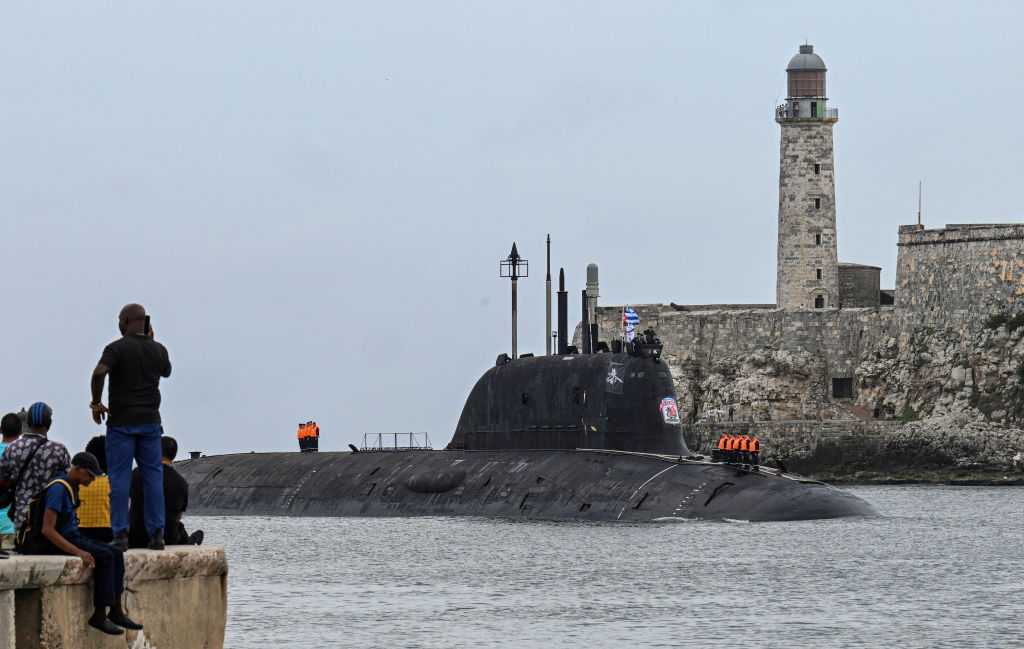Russian Naval Fleet Visits Cuba Amid Rising Tensions
The geopolitical intrigue between Washington and Moscow over the Ukraine conflict has taken a maritime twist, with both countries showcasing their naval prowess around Cuba. In an event evocative of Cold War drama, a fleet from the Russian Navy, including a nuclear-powered submarine and a modern frigate, arrived in Havana for a five-day visit, underscoring deepening ties between Russia and Cuba.
The Arrival of the Russian Fleet
The Russian fleet, comprising the nuclear-powered submarine Kazan and the frigate Admiral Gorshkov, made headlines as it entered Havana Bay. The visit has allowed the Cuban public to tour the Admiral Gorshkov, an advanced ship in Russia’s arsenal. Despite the formidable appearance, the Cuban Ministry of Defense was quick to assure that these ships bore no nuclear weapons and posed no threat to regional security, a statement seemingly directed at the United States.
The U.S. Response and Naval Presence
In a closely timed appearance, the USS Helena, a U.S. Navy nuclear-powered submarine, surfaced in Guantanamo Bay shortly after the Russian fleet's arrival. The Pentagon and the State Department downplayed the significance of these developments, emphasizing that such movements were routine and posed no direct threat to U.S. security. Notably, from 2013 to 2020, Russian naval ships have made similar visits to Cuba.
However, the U.S. has not remained passive. The Southern Command confirmed an intensified naval presence in the region, bolstered by France and Canada, as part of a broader monitoring mission. This includes three guided missile destroyers and support from allied naval forces. The U.S. aims to ensure responsible maritime conduct and maintain strategic advantage in the Atlantic, according to official statements.
Geopolitical Implications and Future Maneuvers
The arrival of the Russian fleet and the corresponding U.S. actions occur amidst heightened global tensions following President Joe Biden’s approval of Ukrainian strikes within Russian territory with U.S.-supplied weaponry. Moscow’s move to send naval forces to Cuba is seen as a direct countermeasure, with Russian President Vladimir Putin previously vowing to employ 'asymmetric means.'
Cuban authorities have expressed discontent over the U.S. submarine’s presence, calling it an unwanted encroachment, given the long-standing U.S. stance towards Cuba. Additional exercises and operations by the Russian fleet are planned in the Caribbean, with potential stops in Venezuela, signaling ongoing strategic maneuvers in the region.
The presence of high-precision missile capabilities on Russian naval vessels, practiced against sea targets before their arrival in Cuba, further amplifies the strategic stakes. Despite the Pentagon’s assurances of no immediate threat, the revitalized naval activities reflect the persistent and evolving nature of U.S.-Russia rivalry, now played out in the Caribbean waters.
- Russia's deepening ties with Cuba come as the island nation faces severe economic strains, increasingly reliant on Russian oil and aid amidst a protracted crisis. This relationship, harking back to Cold War alliances, raises questions about the future geopolitical landscape in the region.
- Experts believe that the increased naval presence on both sides serves as a symbolic yet potent reminder of ongoing power dynamics, despite official statements downplaying the events. These developments highlight the undercurrents of military preparedness and strategic posturing prevalent in current international relations.






